Abstract
A genomic library of Pseudomonas syringae pv. glycinea race 6 DNA was constructed in the mobilizable cosmid vector pLAFR1 and maintained in Escherichia coli HB101. Completeness of the library was estimated by assaying clones for the expression of ice-nucleating activity in E. coli. Ice-nucleation activity was represented approximately once in every 600 clones. Six hundred eighty random race 6 cosmid clones were mobilized from E. coli by plasmid pRK2013 in individual conjugations to a race 5 strain of P. s. glycinea. A single clone (pPg6L3) was detected that changed the race specificity of race 5 from virulent (compatible) to avirulent (incompatible) on the appropriate soybean cultivars. The clone was also mobilized from E. coli into race 1 and race 4 strains of P. s. glycinea, and it conferred on these transconjugants the same host range incompatibility as the wild-type race 6 strain. The cosmid clone was mapped by restriction endonucleases, and two adjacent EcoRI fragments were identified by transposon Tn5 mutagenesis to be important in determining race specificity. Southern blot analysis showed that the two EcoRI fragments are unique to race 6 and are not present in the other races tested. The cosmid clone pPg6L3 was also mobilized to Pseudomonas fluorescens and Rhizobium japonicum. However, neither these isolates nor E. coli harboring pPg6L3 elicited a hypersensitive reaction in soybean leaves.
Keywords: plant-parasite interaction, disease resistance, cosmid cloning, ice nucleation
Full text
PDF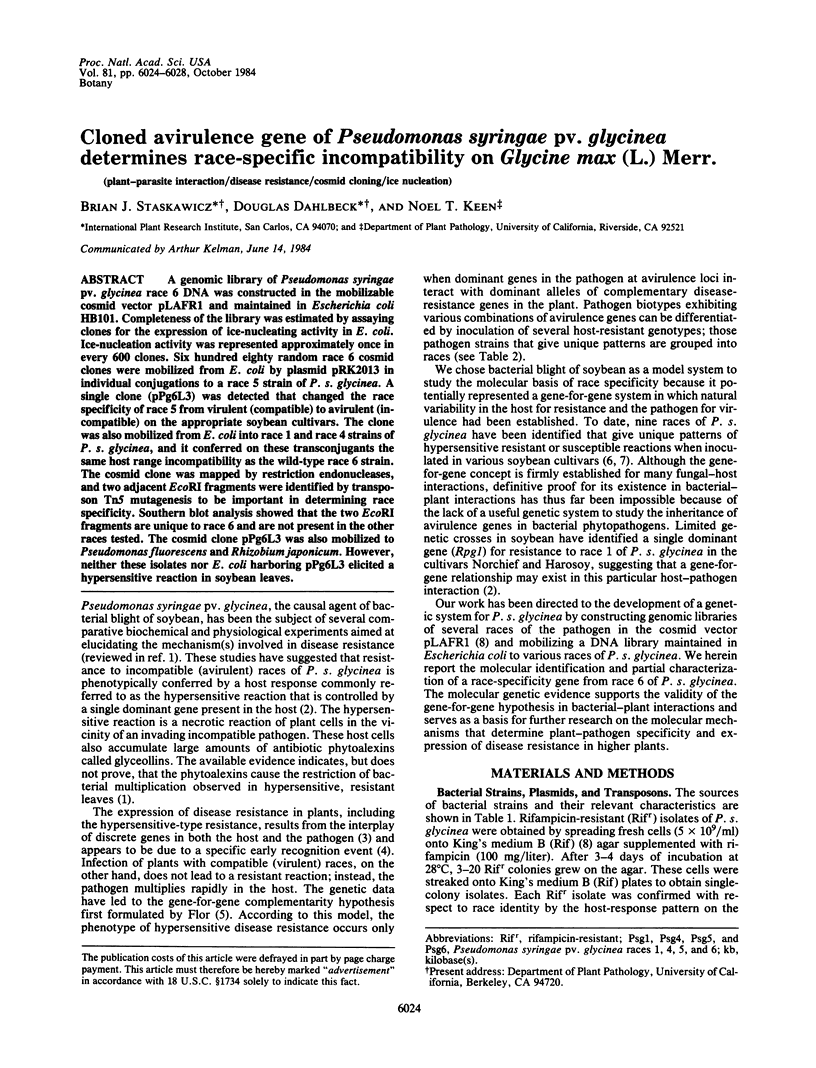
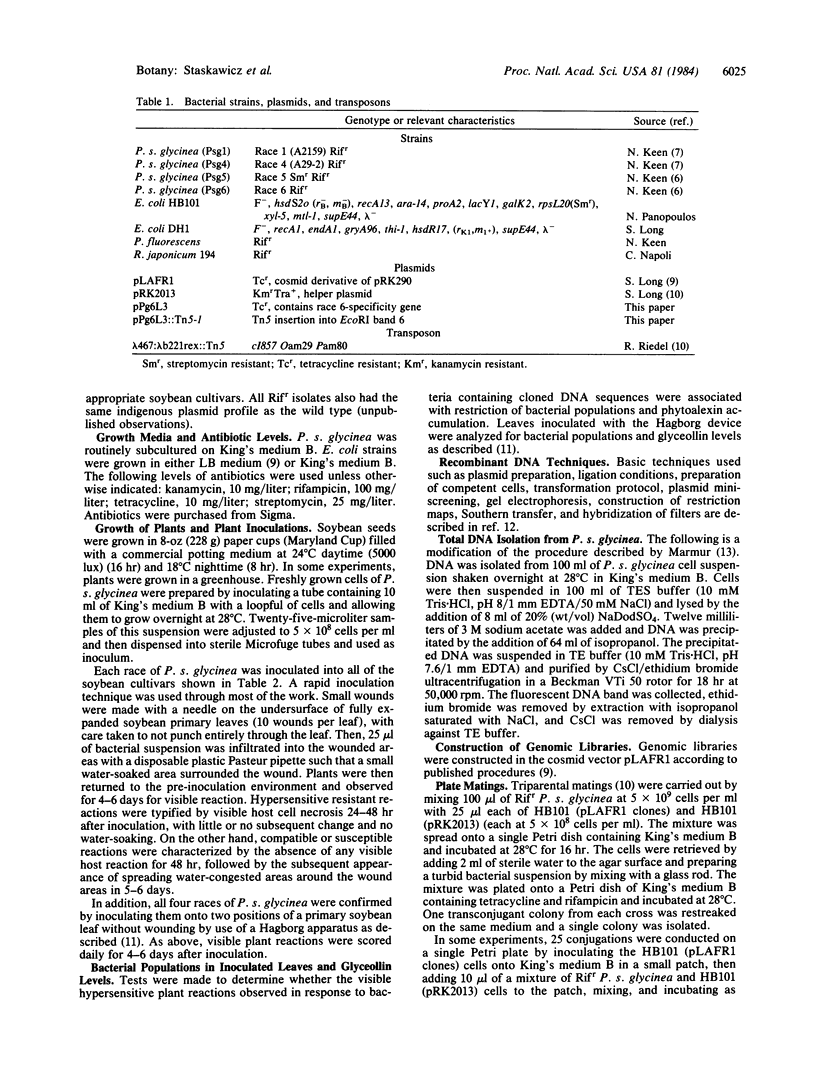
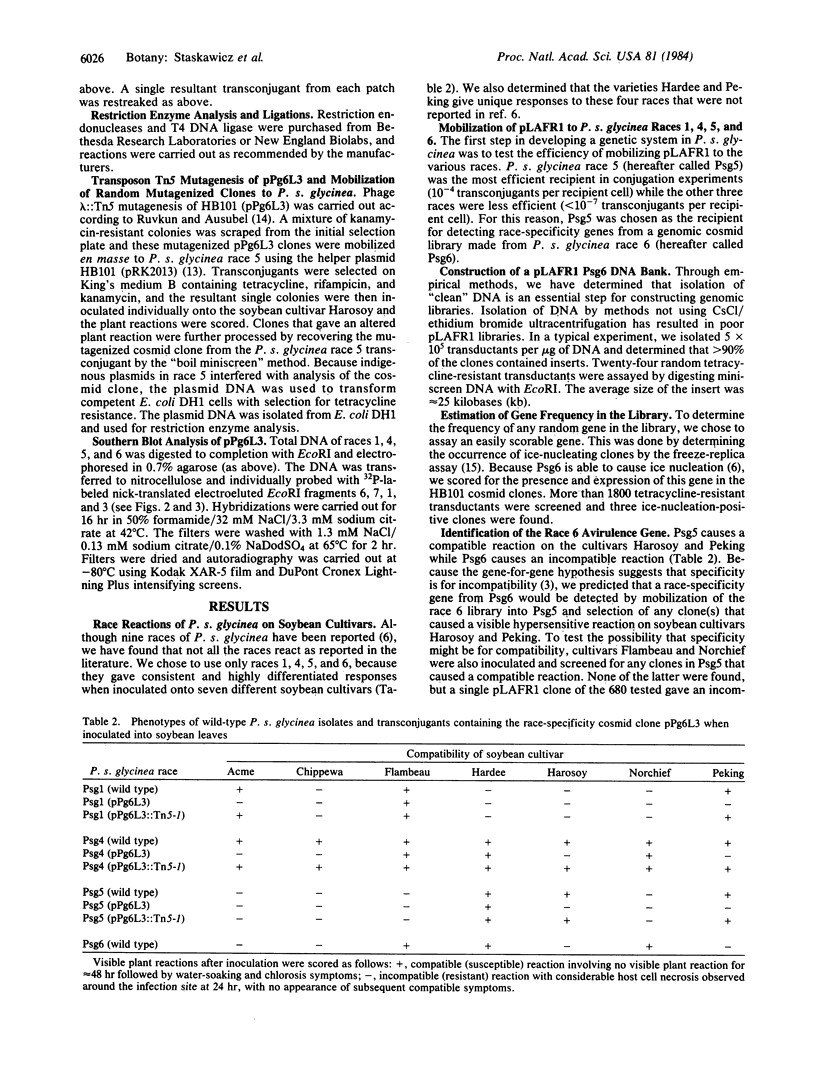
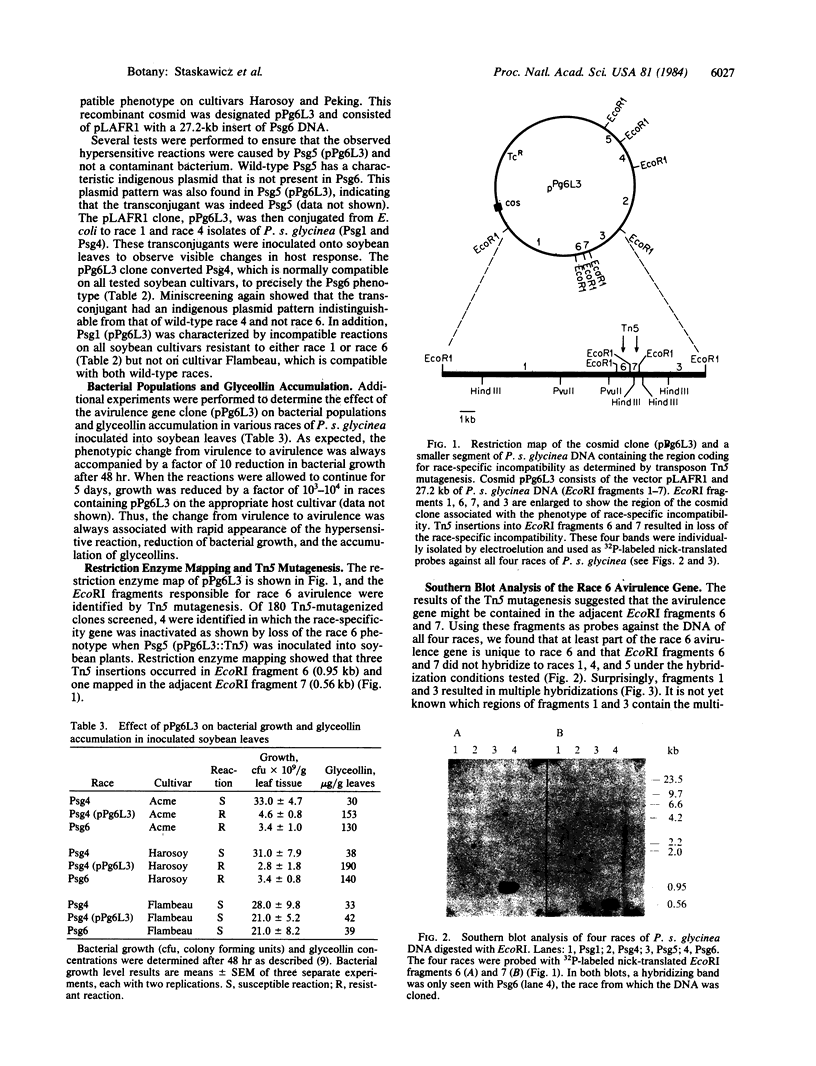
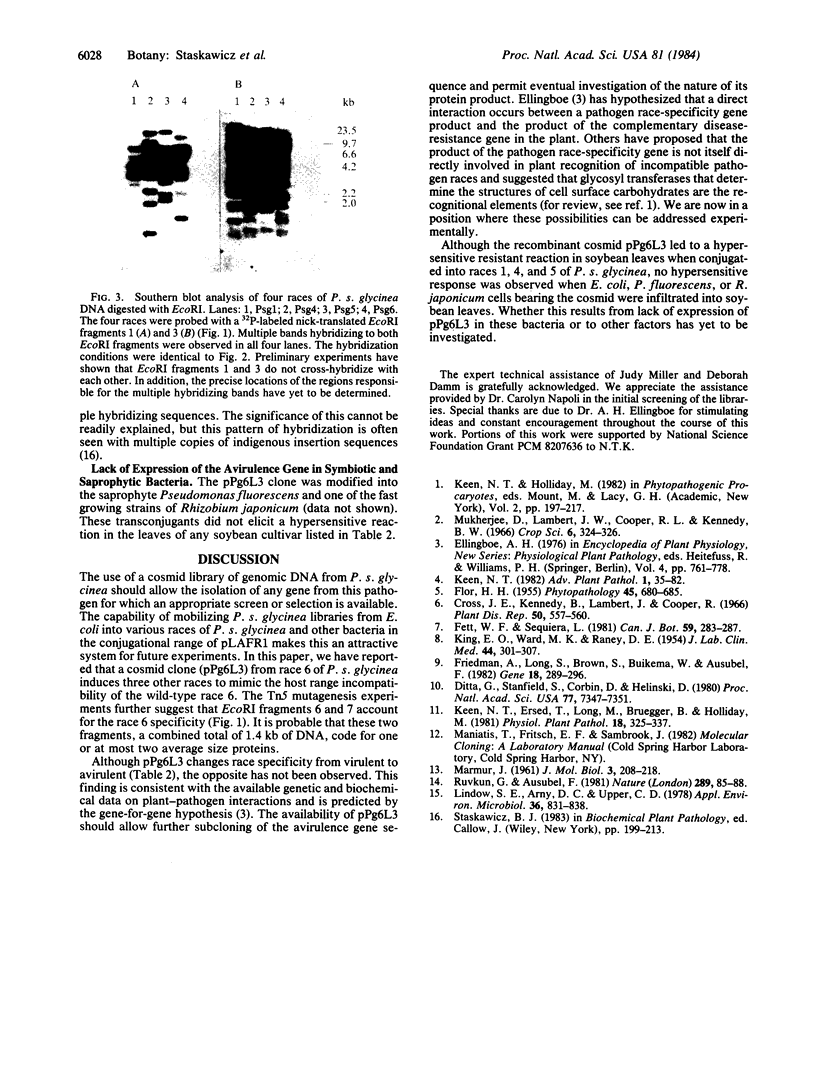
Images in this article
Selected References
These references are in PubMed. This may not be the complete list of references from this article.
- Ditta G., Stanfield S., Corbin D., Helinski D. R. Broad host range DNA cloning system for gram-negative bacteria: construction of a gene bank of Rhizobium meliloti. Proc Natl Acad Sci U S A. 1980 Dec;77(12):7347–7351. doi: 10.1073/pnas.77.12.7347. [DOI] [PMC free article] [PubMed] [Google Scholar]
- Friedman A. M., Long S. R., Brown S. E., Buikema W. J., Ausubel F. M. Construction of a broad host range cosmid cloning vector and its use in the genetic analysis of Rhizobium mutants. Gene. 1982 Jun;18(3):289–296. doi: 10.1016/0378-1119(82)90167-6. [DOI] [PubMed] [Google Scholar]
- KING E. O., WARD M. K., RANEY D. E. Two simple media for the demonstration of pyocyanin and fluorescin. J Lab Clin Med. 1954 Aug;44(2):301–307. [PubMed] [Google Scholar]
- Lindow S. E., Arny D. C., Upper C. D. Distribution of ice nucleation-active bacteria on plants in nature. Appl Environ Microbiol. 1978 Dec;36(6):831–838. doi: 10.1128/aem.36.6.831-838.1978. [DOI] [PMC free article] [PubMed] [Google Scholar]
- Ruvkun G. B., Ausubel F. M. A general method for site-directed mutagenesis in prokaryotes. Nature. 1981 Jan 1;289(5793):85–88. doi: 10.1038/289085a0. [DOI] [PubMed] [Google Scholar]




